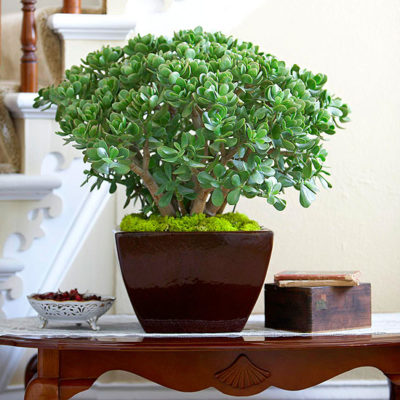By Jenny Krane, Better Homes & Gardens

Houseplants are extremely popular right now and don’t need to be a challenging addition to home decor. These varieties are common finds in plant stores because they can thrive in almost any home with little to no fuss. The most common issue houseplant owners face is loving their plants a little too much.
Many common houseplants are from subtropical or tropical areas, meaning they need moisture. However, a common misconception of plant owners is that plants want more air moisture rather than soil moisture. Many plants show yellow leaves or brown leaf ends because they are being overwatered. To avoid overwatering, press your finger about an inch into the soil to feel if it is moist. If the soil has moisture, wait a few days before watering. As a rule of thumb, only water a plant with dry soil.
Although many houseplants can’t tolerate overwatering, they also cannot tolerate dry air, which is a problem in many modern homes with air conditioning. To keep houseplants happy, place them away from any source of forced air or heat like vents, heaters, or radiators. In the winter, when the air is driest, use a spray bottle to lightly mist houseplants a few times a week. Open a window near the plant when the weather gets warmer to give it some fresh air. Also, keep light in mind. Most houseplants prefer bright, indirect sunlight over direct sunlight, so be mindful when choosing a place for your plants.
Here’s a list of the plants that are super hardy:
Pothos
Peace Lily
Snake Plant
Jade Plant
Dracaena
Philodendron
Money Plant
What to Look For When You’re Killing Your Plant
- Yellow leaves indicate lack of nutrients, overwatering, poor drainage, or a combination of the three
- Brittle leaves come from giving your plant too much sun and dry air
- Wilting and brown spots can be a sign of overwatering and possible root rot
- Stunted growth means the plant is rootbound and too large for its pot
How to Transplant a HouseplantYou’ll know it’s time to transplant your houseplant when either the roots are growing out of the bottom of the pot or when the plant is starting to lift itself out of the soil. Transplanting not only gives your plant a little more breathing room, but freshens up the soil. Choose a new pot that is only a few inches wider and deeper than the previous pot, and one that has a drainage hole at the bottom.
Give your plant some moisture in the days leading up to repotting. When it’s time to repot, loosely wrap fingers around the plant, turn the pot upside down, and wiggle the plant out into your hand. Place the plant into the new pot, which should be around 3/4 of the way full with new soil. Add extra soil around the plant, but leave about an inch of the top of the pot unfilled for fewer watering messes. Water the plant well and move it to its location in your home.
TJs TIP: Stop by today. Payne’s just received a large shipment of houseplants including many of the above mentioned.
